We are officially on the home stretch in the lead up to Halloween with Part 3 of Cinema Smack’s 31 Days of Horror! If you haven’t been following, you can catch up with Part 1 here and Part 2 here.
Before we begin with Part 3, we’ll go through the spiel one more time. This list isn’t just a “greatest hits” or a history of horror as countless other publications have already done that in the past. Instead, the purpose is to sort of curate a diverse collection of classics, genre favorites, underrated gems, and cult films to appease horror fans of all kinds. Of course, some sacrifices needed to be made to whittle the list down to 31 so some obvious horror staples may not be represented. After all, there’s always next year.
With that, let’s wrap things up here in Part 3 of Cinema Smack’s 31 Days of Horror!
October 21st: Inside (2007)
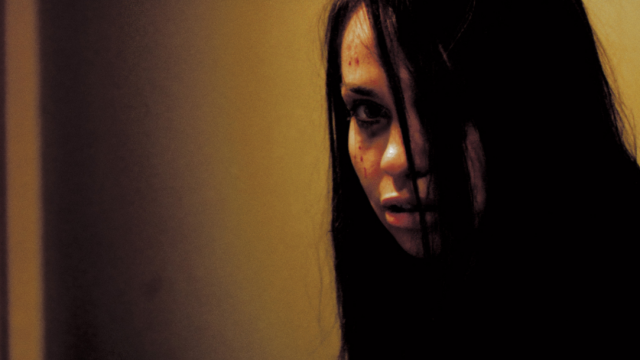
So, the final entry of Part 2, The Autopsy of Jane Doe, scaled back on the monsters, murderers, and gore for a more mysterious and eerie horror experience. Well, today’s film throws all that completely out the window as, arguably, the most bloody and disturbing film on our entire 31 Days of Horror. Alexandre Bustillo and Julien Maury’s 2007 film, Inside, opens with Sarah (Alysson Paradis), an expecting mother, and her husband, Matthieu (Jean-Baptiste Tabourin), getting in a car crash. Matthieu doesn’t survive the wreck but Sarah and her unborn baby do. Fast forward four months to Christmas Eve where Sarah is scheduled to be induced the following morning. Wanting to be alone, she turns down invitations from both her mother, Louise (Nathalie Roussel), and employer, Jean-Pierre (François-Régis Marchasson), to spend Christmas with either one of them. Instead, Sarah ends up spending it with a vengeful woman, known only as La Femme (Béatrice Dalle), who breaks into her house intending to leave with Sarah’s baby.
First things first, Inside is not a movie for everybody. In fact, it’s not even a film for every horror fan. Inside is considered a part of the New French Extremity horror movement which has elements of slashers, body horror, and exploitation films often taken to the extreme. It’s insanely violent, bloody, and gory as La Femme swiftly cuts down anyone who gets in the way of her and Sarah’s baby. As the second foreign film on our list and the only French one, there were plenty of other films we could’ve chosen, such as High Tension or Martyrs, but Inside is a film that just takes things a step farther. What could possibly be more terrifying than a home invasion thriller where the villain’s goal is to steal someone’s unborn baby? Not only is there a woman’s life at stake but also a complete innocent’s. Every single minute of Inside’s 82 minute runtime is filled with suspense, discomfort, and total fear.
There are some irritating parts of Inside with Béatrice Dalle’s La Femme playing a seemingly never-ending game of cat and mouse with Sarah. Yet, the film is complete spectacle. The crazy amount of blood, gore, and sheer terror throughout the film will have viewers unable to look away as Sarah is tormented by her attacker. While American films like the later entries in the Saw franchise and Hostel may be blood-soaked and violent for violent’s sake, Inside feels like it actually has a story to tell. The spectacle of it is just what puts it over the top. Inside is about people who’ve suffered through tragedy and will go to wild lengths to right the wrongs done to them. It’s a film about anguish and despair under the frightfully macabre guise of a horror movie. Again, Inside isn’t for every horror fan, but for those willing to watch it, it’s an experience you won’t soon forget.
October 22nd: The Funhouse (1981)
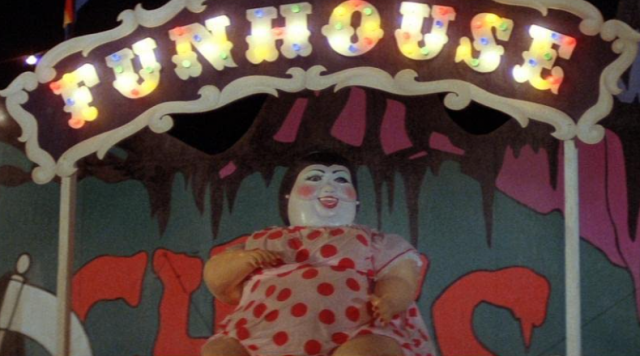
As much as Cinema Smack’s 31 Days of Horror is meant to spotlight recommended films for people to watch in the lead up to Halloween, it’s also been a who’s who of horror filmmakers with names like Alfred Hitchcock, Wes Craven, and Dario Argento already being represented. As stated in the mission statement of this feature, though, we’re not just here to promote all the usual horror suspects. Therefore, today we’re covering another horror pioneer in Tobe Hooper but we’re not covering his most famous work, 1974’s The Texas Chain Saw Massacre or even 1982’s Poltergeist. Hooper’s 1981 effort, The Funhouse, centers on Amy Harper (Elizabeth Berridge) and her friends, Buzz (Cooper Huckabee), Richie (Miles Chapin), and Liz (Largo Woodruff), as they secretly go to the local carnival unbeknownst to Amy’s parents. There, they enjoy all the sideshow attractions as they get into mischief. Eventually, they decide to stay overnight in the funhouse where they discover that the carnival and its workers aren’t just about fun and games.
First time viewers will probably notice right away that The Funhouse isn’t overly original as a slasher film. It follows the usual tropes of young people getting themselves into dangerous predicaments they could avoid. Had they just gone to the carnival (or even the movies as they were supposed to) and left at closing time, there wouldn’t have been a problem. Yet, Amy and her friends felt compelled to meddle. That being said, even though the plot is familiar, the location isn’t. Prior to the 1980’s, most slashers were low budget affairs that took place in normal, every day locations like a house, neighborhood, campground, etcetera. With The Funhouse, production value was upped with its much larger cast exploring a bright, colorful set serving as a lively backdrop for the macabre soon to come.
We’ve already mentioned that The Funhouse isn’t as recognized or influential as Hooper’s Texas Chain Saw Massacre. However, it has a lot of the same qualities with its grotesque cast of villainous characters and detailed lived-in sets. It also sticks to the idea of the protagonists of the film being the outsiders. They stumble into a lifestyle they mock and/or know very little about. In a way, they’re invaders and it’s hard to really fault the carnival workers for being upset by their presence regardless of their sins. In addition to this, The Funhouse is a love letter to horror cinema. Hooper pays homage to not only his previous work but also Psycho and seemingly every Universal monster movie from the 1930’s and 1940’s. As a whole, the film is bizarre, silly, weird, and violent which horror fans would come to know as trademarks of Tobe Hooper’s career. It’s also because of all these things that The Funhouse is a perfect, spirited film to watch in the lead-up to Halloween.
October 23rd: Frankenstein (1931)
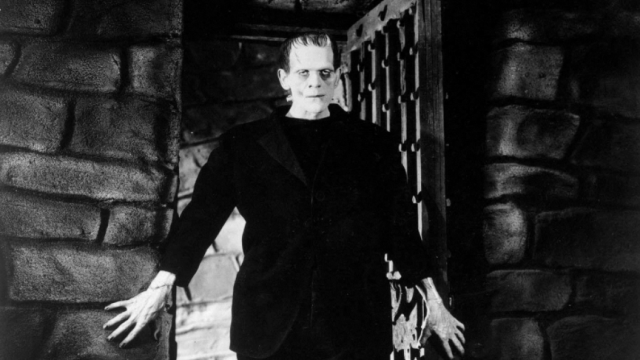
Today, we flip the calendar back all the way to the earliest film on our 31 Days of Horror. James Whale’s 1931 masterpiece, Frankenstein, focuses on Dr. Henry Frankenstein (Colin Clive) as he collects body parts in an attempt to create life out of death. Henry’s hunchback assistant, Fritz (Dwight Frye), steals the brain of a criminal which Henry puts in the body he’s assembled from robbing graves. After the body is struck by a bolt of lightning, Frankenstein’s monster (Boris Karloff) comes to life but, despite its childlike demeanor, has something of a murderous rage. Intending to have the monster destroyed, Henry returns to his estate at the behest of his fiancée, Elizabeth (Mae Clarke). Unfortunately for Henry, though, the monster escapes and terrorizes the village.
You really can’t get much more classic than Frankenstein. Mary Shelley’s original novel was written in 1818 and adapted countless times in its 200+ years of existence. The earliest known adaptation was Thomas Edison’s 1910 film of the same name. As for the 1931 version, even if you’ve never seen it, it’s likely you already know the highlights of the film and, ultimately, what happens. What really sets the 1931 film apart from others is its cast. Both Colin Clive and Dwight Frye are excellent as the duo of Henry Frankenstein and his assistant, Fritz. Clive especially has one of the best quotes in all of cinema with his exclamation of, “It’s alive! It’s alive!” However, it’s Boris Karloff as the monster that has persisted as a cultural icon. Karloff’s monster, with makeup done by Jack Pierce, is the universal (no pun intended) depiction of the character. No one has done it better than Karloff in the almost 90 years since his debut as the character.
When it comes to the string of original Universal Studios Frankenstein films, there’s a bit of a debate as to which is the best. It seems that the majority of people believe Whale’s follow-up, 1935’s Bride of Frankenstein, to be the best of the bunch. Even the third film in the series, 1939’s Son of Frankenstein, is a surprisingly strong sequel which adds fellow horror icon Bela Lugosi to the pairing of Clive and Karloff. For us though, nothing trumps the original. The film is simply legendary. For anyone looking to get into classic horror or the old Universal monsters in general, you can’t go wrong with Frankenstein.
October 24th: Night of the Living Dead (1968)
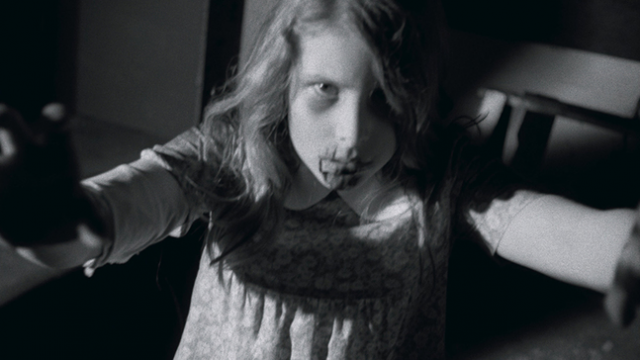
How do you follow up such a classic horror film like James Whale’s Frankenstein? You do it by covering another classic that revolutionized the genre. While many early horror films focused on monsters, death, and the supernatural, none of them did it like George A. Romero’s Night of the Living Dead. The film opens with Barbra (Judith O’Dea) and her brother, Johnny (Russell Streiner), making a long car trip to visit their father’s grave. Johnny starts teasing Barbra but is suddenly attacked by a zombie (Bill Heinzman) causing his sister to flee to a nearby farmhouse. Another man, Ben (Duane Jones), arrives in the nick of time as zombies begin surrounding the house. Ben and Barbra, who’s in something of a catatonic state, soon discover other survivors hiding out in the house. If any of them want to survive the night, they have to learn to work together to keep the dead at bay.
There’s so much that can be said about Romero’s Night of the Living Dead from its surprising reception to the casting of African American Duane Jones in the lead role and all the way to the distributor’s failure to copyright the film leading it to be, arguably, the most iconic public domain film of all time. For more of this, Rob Kuhns’ Birth of the Living Dead documentary is certainly worth a watch. However, the reason that Night of the Living Dead had to be represented in our 31 Days of Horror is because it should be recognized as one of the very first “modern” horror films. Sure, something like Alfred Hitchcock’s Psycho deserves a ton of credit for its surprises and storytelling but Night of the Living Dead added in all the blood, guts, and overall spectacle that the horror genre would eventually be known for. In addition, the film still boasts plenty of the suspense, shock, and awe of something like Psycho.
With images of blood, corpses, and zombies devouring the flesh of their victims, Romero set the guidelines for what to expect from nearly every zombie influenced title going forward. While films like I Walked With a Zombie had been released well before, nothing came close to Night of the Living Dead upon its release. At the time, Night of the Living Dead tested the limits of how far one could push the horror genre with its cannibalistic subject matter, ghastly effects, and, of course, violence. Romero’s brutal and unflinching effort not only influenced countless films moving forward but it leaves behind a cultural legacy as well. Many cite it as a critique on the Vietnam War as the horror finally came home to American soil where the “silent majority” (AKA the living dead) remain directionless as the country tears itself apart. Whether you’re in for its cultural impact or just a gruesome good time, Night of the Living Dead is absolutely essential for every horror fan.
October 25th: The Sixth Sense (1999)
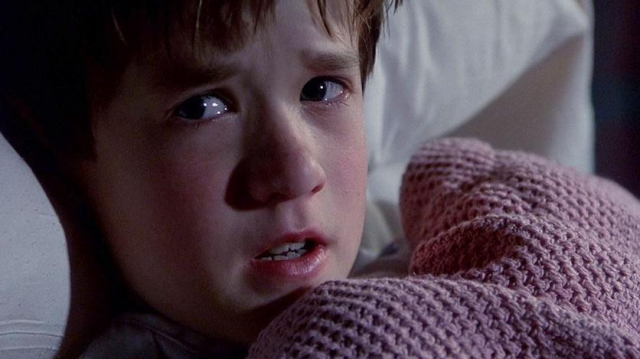
Even though writer/director M. Night Shyamalan has become something of a sideshow attraction at this point with his convoluted and overcomplicated storytelling, there was a time when he was very much considered a filmmaker set for a meteoric rise. The main reason for this is because of today’s entry onto our 31 Days of Horror, The Sixth Sense. The film sees child psychologist Malcolm Crowe (Bruce Willis) take on a new patient after dwelling on his past failures with a previous one. As he faces a crumbling marriage with his wife, Anna (Olivia Williams), Malcolm develops a relationship with Cole Sear (Haley Joel Osment), a young boy who harbors a deep, dark secret. Cole, whose father recently left and his mother, Lynn (Toni Collette), struggles daily with multiple issues, doesn’t think anyone can help him with his problem. Yet, Malcolm may be the only one who has the ability to actually do so. To avoid spoilers for anyone who may have been living under a rock since 1999, this is all we’ll say about the plot.
Now, some people may be wondering, “Is The Sixth Sense really a horror film?” While you could definitely argue that maybe it’s a thriller or even a drama, there’s so much about the film that just screams horror. Whether it’s the eerie tension from start to finish, the effective scares, or just the subject matter in general, The Sixth Sense is basically a horror film that takes itself seriously. Prior to the film’s release, the slasher subgenre had had something of a resurgence due to the popularity of Wes Craven’s self-aware Scream but The Sixth Sense brought the horror genre as a whole back into the mainstream. It was nominated for six Oscars, including being only the third horror film to ever be nominated for Best Picture, and made over $672 million worldwide. With its slew of Oscar nominations, a terrifying reputation, and perhaps one of the greatest movie quotes ever, The Sixth Sense was a massive triumph for the genre upon its release in 1999.
With all of its accolades and high praise, one thing we have to question is, “how does the film hold up in 2020?” There’s something a bit melodramatic about the film as it toes the line of being a drama/thriller. Bruce Willis puts in a surprisingly subdued and quality performance that fits the character but makes Willis almost a strange casting choice in hindsight. However, it’s young Haley Joel Osment that steals the show with his delivery, innocence, and, of course, the utter fear he exudes from the screen. Experiencing the film’s most frightening moments vicariously through Osment’s Cole is what pushes The Sixth Sense into definite horror movie territory. Even now, the film’s best scenes send chills down your spine and serve as a reminder as to why the film achieved such success. Whether you want to call The Sixth Sense horror, thriller, or even drama, there’s no doubt that its greatest moments rest firmly in the macabre. Thus, the film is more than worthy of a spot on our list.
October 26th: Jacob’s Ladder (1990)
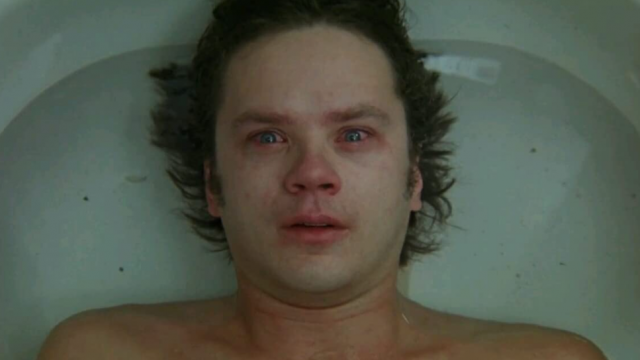
Like with The Sixth Sense, you could ask if this next entry is truly a horror film. However, we’d respond by asking what’s more terrifying than the horrors of war? Adrian Lyne’s 1990 film, Jacob’s Ladder, follows Vietnam War veteran, Jacob Singer (Tim Robbins), as he tries to put the pieces of his life back together. Still suffering from delusions brought on by his time in the service as well as mourning the loss of his son, Gabe (Macaulay Culkin), Jacob tries to return to normalcy working as a postal worker and living with his girlfriend, Jezzie (Elizabeth Peña). Though, Jacob becomes increasingly unstable and has trouble figuring out what’s real, imaginary, or just a nightmare. As his hallucinations and experiences become more bizarre, it appears that there’s more to Jacob’s story than what meets the eye.
While films like Night of the Living Dead and The Texas Chain Saw Massacre have often been linked to lingering homeland sentiment about the Vietnam War, Jacob’s Ladder is a film that addresses it directly. It’s true that many stationed there had ghastly experiences but, for many veterans, the psychological damage of said events has often been the unseen scar they carry with them. This is perfectly captured in the film. With everything that Jacob has been through, he suffers through nightmares every day whether he’s awake or asleep. Much of the horror taking place onscreen is understood to be in Jacob’s mind and he’s unable to deal with his mental anguish alone. Other than his old war buddies though, there’s no one he can turn to that fully understands his dilemma either. His girlfriend, Jezzie, is supportive but can’t relate to his military or familial past with his marriage to Sarah (Patricia Kalember). As Jacob, Tim Robbins plays a man that descends so far into madness that it’s unlikely that he’ll ever make it back.
Where Jacob’s Ladder really excels is in its misdirection. The film does give plenty of clues about what’s really going on in Jacob’s life but never too much as to spoil its fun either. It’s a film that cruelly toys with its viewers as much as it does its protagonist. It actually avoids a lot of traditional horror tropes to craft a more realistic and distressing approach to its real-life subject matter. Robbins gives a fantastic performance as Jacob who’s extremely likable, sympathetic, and, at times, even a little scary as he’s haunted by his past. As previously mentioned, Jacob’s Ladder is another one of those films that toes the line of drama, thriller, and horror but its story and direction clearly point to the latter genre. Not only is it a creepy and depressing watch, Jacob’s Ladder deals with the fallout of a very real and very dark event in American history. Because of that, Adrian Lyne and screenwriter Bruce Joel Rubin, craft a very different horror tale that sticks with you long after the credits roll.
October 27th: Hereditary (2018)
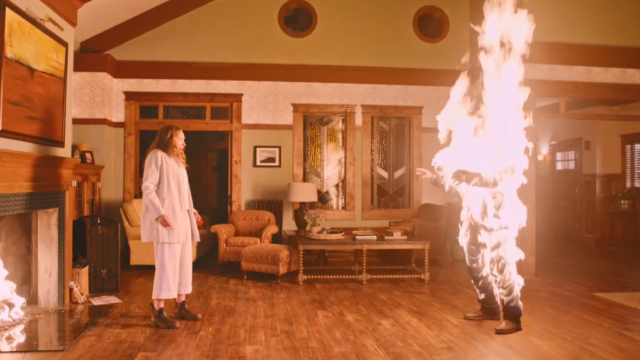
Now, we come to the most recent film included in our 31 Days of Horror. Yes, we’ve talked about Ari Aster’s Hereditary many, many times on this site but it’s a film that we just had to revisit again here. The film begins with the passing of the matriarch of the Graham family. Daughter Annie (Toni Collette) delivers a eulogy at her mother’s funeral addressing how secretive her life was. From here, the lives of Annie, her husband, Steve (Gabriel Byrne), their son, Peter (Alex Wolff), and their daughter, Charlie (Milly Shapiro), begin falling apart especially after another family tragedy. The psychological torture of the Grahams gets out of hand as viewers are left to question Annie’s sanity as well as the safety of the family as a whole.
Hereditary is completely nuts. As soon as the film starts, you know things aren’t going to go well for this family as they’re torn apart in so many ways from start to finish. It’s such an unsettling watch that feels reminiscent to classic 1960’s and 1970’s horror as opposed to genre films of today. In addition, Toni Collette gives the performance of a lifetime as Annie Graham. In our original review of Hereditary, we compared her to Gena Rowlands in John Cassavetes’ A Woman Under the Influence and stated how it’d be an outrage if Collette didn’t receive an Oscar nomination for the role. That sentiment still holds true in 2020 and, sadly, Collette didn’t receive a nomination. The rest of the cast doesn’t slouch either as each character suffers traumatically from their collective actions. The film is nightmarish in its approach and an insane ride that’s definitely not for everyone.
With its deliberate pacing and masterful camerawork slowly revealing the secrets that haunt the Graham family, Hereditary is much more of an experience than a typical movie. Again, it has more in common with older titles like Rosemary’s Baby or The Exorcist than with what passes as horror these days. This is a film that shows what the horror genre is capable of and not one that just relies on the same old formula to appease an audience. While there’s certainly spectacle, it feels justified and also earned during the film’s most shocking moments. Ari Aster crafts a genre masterpiece with Hereditary and establishes himself among the horror filmmaking elite. Multiple viewings are highly recommended because Hereditary only gets better and better the further you sink into its impeccable madness.
October 28th: The Exorcist (1973)
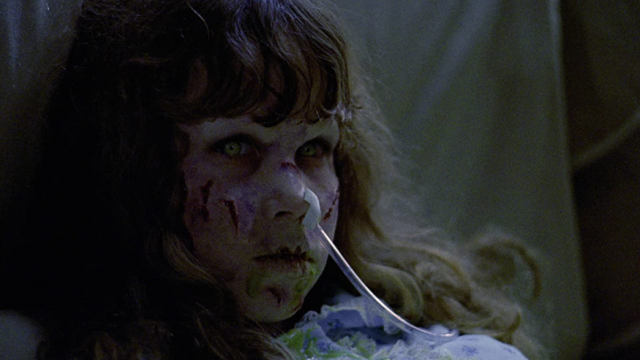
So, how do you follow up one of the most original and unique films in recent memory? You turn to, arguably, the greatest horror film ever made in William Friedkin’s The Exorcist. The film centers on actress Chris MacNeil (Ellen Burstyn) and her twelve-year-old daughter, Regan (Linda Blair), living in the Georgetown neighborhood of Washington D.C. during a movie shoot. After playing with a Ouija board, Regan starts acting strangely as she spouts out vulgar language and has insanely violent outbursts. After very little help from an array of doctors, evidence begins to pile up that Regan may actually be possessed by a demon. Father Damien Karras (Jason Miller), a Jesuit priest facing a religious crisis of his own, is eventually called on by Chris to help figure out what’s wrong with her daughter. Along with fellow priest, Father Lankester Merrin (Max von Sydow), the two perform an exorcism on the young girl to save her life.
While there are plenty of classic horror films that came before and after, nothing touches The Exorcist. Adapted from the 1971 novel of the same name by William Peter Blatty, who also pens the screenplay for the film, The Exorcist has often been cited as the scariest movie ever made. Upon its release in 1973, the film was said to cause physical reactions in audiences, including nausea, vomiting, and even a supposed miscarriage. There was also a rumor of a cursed production with long term physical injuries to both Ellen Burstyn and Linda Blair. Most of the set burnt down other than Regan’s bedroom where the film’s exorcism is performed. There’s so much lore behind The Exorcist that it gives the actual viewing experience an added mystique as well. While it’s relatively tame when compared to some of the gorier films that would be released in later years, it’s still a very disturbing watch with its amazing practical effects, religious subject matter (including desecration of a church), and timeless story.
The Exorcist is simply a masterpiece. It’s not just a horror masterpiece, it’s a cinematic masterpiece. The film was nominated for ten Academy Awards, winning two including Best Adapted Screenplay, and was the first horror film to ever be nominated for Best Picture. The physical transformation of young Regan and the unknown source of her problem is a nightmarish combination still holds up today. Tack on the issues of Father Karras and his wavering faith and The Exorcist remains a film that can toy with its audience while spitting in its collective face. Nothing here is sacred and, to date, no film has come close to matching the power and aura of The Exorcist. If you’re only going to watch one film off of our 31 Days of Horror, this is the one we recommend.
29. Pumpkinhead (1988)
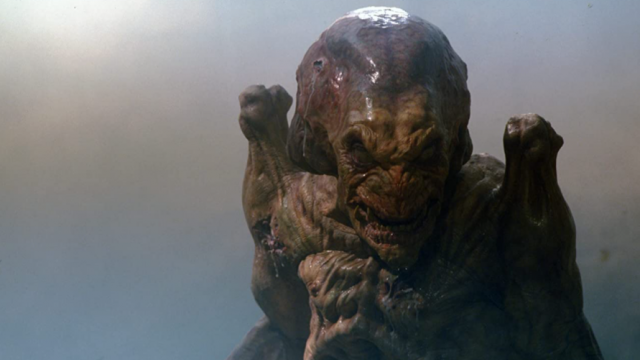
After we’ve bombarded you with a slew of serious horror films, it’s time to have a little bit of fun again as the month of October winds down. These last few days will be dedicated to films that embody the fall season and the spirit of Halloween. First up is the 1988 cult classic, Pumpkinhead. The film sees a group of friends going on a camping trip when they stop at a small store in the country owned by Ed Harley (Lance Henriksen). Growing impatient, one of the campers, Joel (John D’Aquino), decides to ride one of the dirt bikes they brought along and accidentally kills Ed son, Billy (Matthew Hurley). Ed seeks out some of the locals and asks them to point him in the direction of a witch, Haggis (Florence Schauffler), who can hopefully resurrect Billy. The witch then sends Ed to Razorback Holler to raise the vengeful demon, Pumpkinhead (Tom Woodruff Jr.), to get even with the negligent group of teenagers who killed his son.
Pumpkinhead came at an interesting time in horror history as the serious auteur style horror films of the 1970’s gave way to a slew of slasher sequels and copycat films throughout the middle to late 1980’s. The film is something of a combination of the two decades. It definitely takes a lot of influence from slasher films with its disposable teenage body count and un-killable movie monster. Yet, the film surprisingly takes its time building up a lot of suspense as well. It probably takes a good 40 or so minutes until Pumpkinhead is actually resurrected and begins exacting Ed’s revenge. Even upon his return, the creature is often seen in the distance or largely hidden off-screen prior to the film’s climax. If we had to make a comparison, Pumpkinhead is kind of like Halloween 4 with its body count and spooky blue nighttime hue mixed with Alien for its suspense and xenomorph-like creature effects.
Even though there’s not much relating the character to the fall holiday, Pumpkinhead is a perfect B-movie selection to watch on Halloween night. There’s a fall look to the creepy backwoods location complete with lots of fog, a pumpkin patch graveyard, and a destroyed church that’s ripe for some chaotic horror. When it comes to actual quality, this isn’t a film we’d put very high on our list when compared with a lot of the others but it certainly is a spectacle. Watching a monster rip through a bunch of cannon fodder characters is sometimes all you need in horror and Pumpkinhead is one of those films that’s a blast to watch just for its frequent absurdity. In his directorial debut, special effects artist, Stan Winston, created a classic horror character that’s stood the test of time just like his work in films like The Terminator, Aliens, Predator, and Edward Scissorhands. As previously mentioned, Pumpkinhead isn’t necessarily high art or even a “smart” horror movie. However, it’s just a fun, violent, and mindless film that has become a staple for many come Halloween night.
October 30th: Trick ‘r Treat (2007)
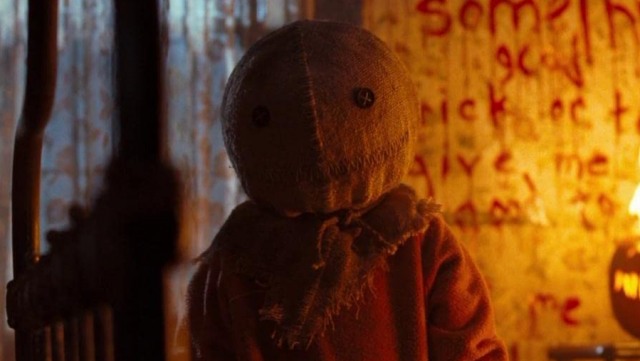
When we were compiling a list of films that absolutely had to be on our 31 Days of Horror list, there were a few no-brainers. This was especially the case when we started to brainstorm films considered to be essentials on Halloween. Films like Night of the Living Dead and The Exorcist are always fantastic go-to’s but, as we mentioned in yesterday’s Pumpkinhead review, Halloween is also a time to have a little fun. While George A. Romero’s Creepshow set the standard for what a horror anthology film could be, Michael Dougherty’s Trick ‘r Treat has become the modern classic. The film is comprised of five loosely interconnected stories all taking place on Halloween night. There’s Steven (Dylan Baker), a school principal who spends his free time murdering people for fun, Laurie (Anna Paquin), a virgin looking to meet the right guy for her “first time,” and crotchety old Mr. Kreeg (Brian Cox), a sort of recluse who goes head to head with special trick-or-treater, Sam (Quinn Lord), donning a mask made out of a burlap sack. There’s also a group of kids trying to pull Halloween night pranks and a couple at odds with their enjoyment of Halloween.
Trick ‘r Treat almost feels like an R-rated collection of short stories out of an R. L. Stine Goosebumps book. None of the stories are necessarily scary but they all stay true to the horror genre and give viewers some good, spooky fun. Simple and effective seems to be the goal of Michael Dougherty and company with this film and it doesn’t disappoint. With characters from each segment popping up in others, there’s an interconnectivity that’s missing from a film like Creepshow or Tales from the Dark Side, another anthology style film. Whereas those films tend to have fan favorite segments among viewers, Trick ‘r Treat feels like a complete experience. Each segment flows into the next and there’s a similar feel extending across the entire film. The Halloween theme is never forgotten as moody atmosphere, Halloween costumes, fall decorations, and jack-o’-lanterns, occupy nearly every scene.
It’s surprising to think that a film that was released direct-to-DVD has made such an impact since its release in 2007. Writer/director Michael Dougherty has supposedly toyed with the idea of making a long awaited and rumored sequel but it has yet to happen. Either way, what Dougherty was able to accomplish with the original is commendable in its own right as it’s become a fan favorite of genre fans and a Halloween night staple. Again, while it takes a similar approach to other anthology flicks, Trick ‘r Treat is more cohesive and, of course, fun. The film perfectly captures the fall season and ominous Halloween spirit. Trick ‘r Treat is one that should definitely be on every horror fan’s list each Halloween.
October 31st: Halloween (1978)
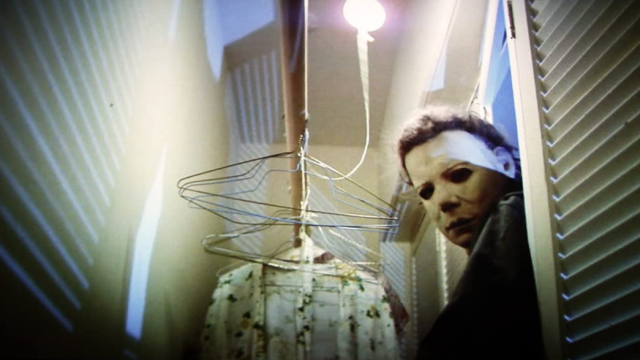
Yes, it’s cliche. Yes, it’s unoriginal to watch Halloween on Halloween. But how could we not end our first 31 Days of Halloween with John Carpenter’s classic? The film sees an escaped mental patient, Michael Myers (Nick Castle), return to his hometown of Haddonfield, Illinois, fifteen years after murdering his sister. Michael, or The Shape as he’s dubbed in the film’s credits, begins stalking and killing babysitters on Halloween night upon his return. The only one able to possibly stop Michael is his longtime doctor, Samuel Loomis (Donald Pleasence), who’s the only one that recognizes Michael for what he is: pure evil.
Halloween is simply classic. If you’ve never seen the film, what’s wrong with you? Go watch it now. While The Exorcist may be the actual best horror film ever made, the genre just wouldn’t be the same without Halloween. From its effective, yet simple, scares, the expressionless and pale William Shatner mask that Michael wears, all the way to its scream queen final girl, Jamie Lee Curtis as Laurie Strode, the film is everything you could ever want in a horror flick. We really can’t say enough about this film as it’s an obvious Halloween night staple because of the name but it’s also worthy of all the praise that’s been heaped on it over the years as well.
There’s a reason that Carpenter’s Halloween persists 40+ years after its release and it’s because it’s a slasher film done right. Even though it’s not the first of its kind, this is the one that set the bar going forward and pretty much every slasher film released since owes a debt of gratitude to Halloween. It set the “rules” of horror movies, established in Wes Craven’s Scream, and, even in 2020, Halloween still holds up as one of the best horror films ever made. It spawned seven sequels, a remake which had its own sequel, and a current string of new sequels, with Halloween Kills set for release next October, that negate everything after the original film. Halloween is the gold standard of horror films and it’s still making money alongside terrifying viewers to this day.
That’s going to wrap up Cinema Smack’s inaugural 31 Days of Horror! Watching and reviewing 31 horror films was a huge undertaking but also a ton of fun. In all honesty, this feature could’ve gone on even longer as there are so many other films we didn’t get to talk about. You can definitely expect to see this feature return again next year. We hope you enjoyed the list and, of course, have a Happy Halloween! Click here to revisit Part 1 or here for Part 2!

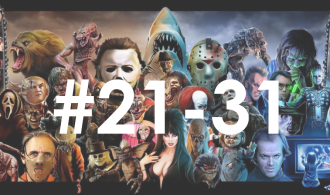
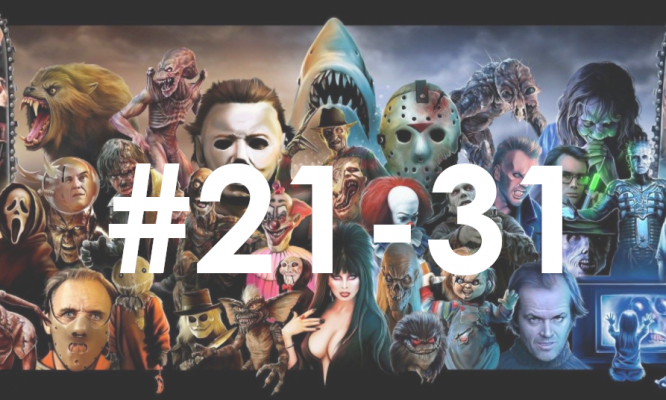
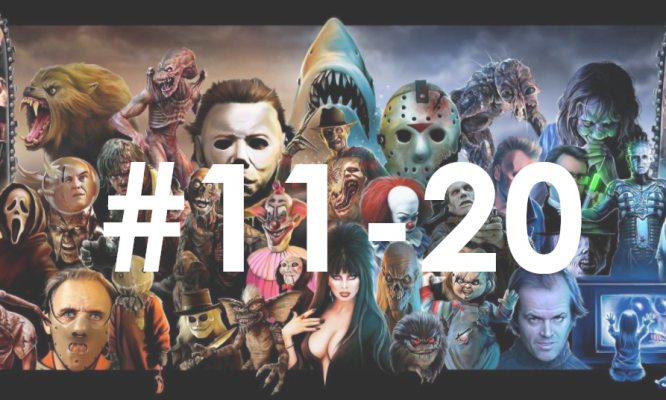
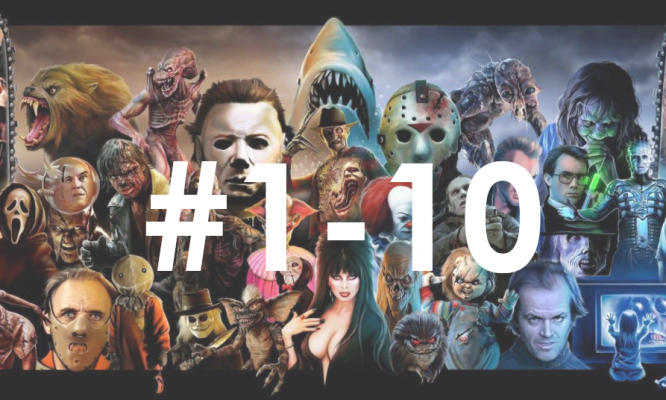
[…] it for Part 2! Click here for Part […]